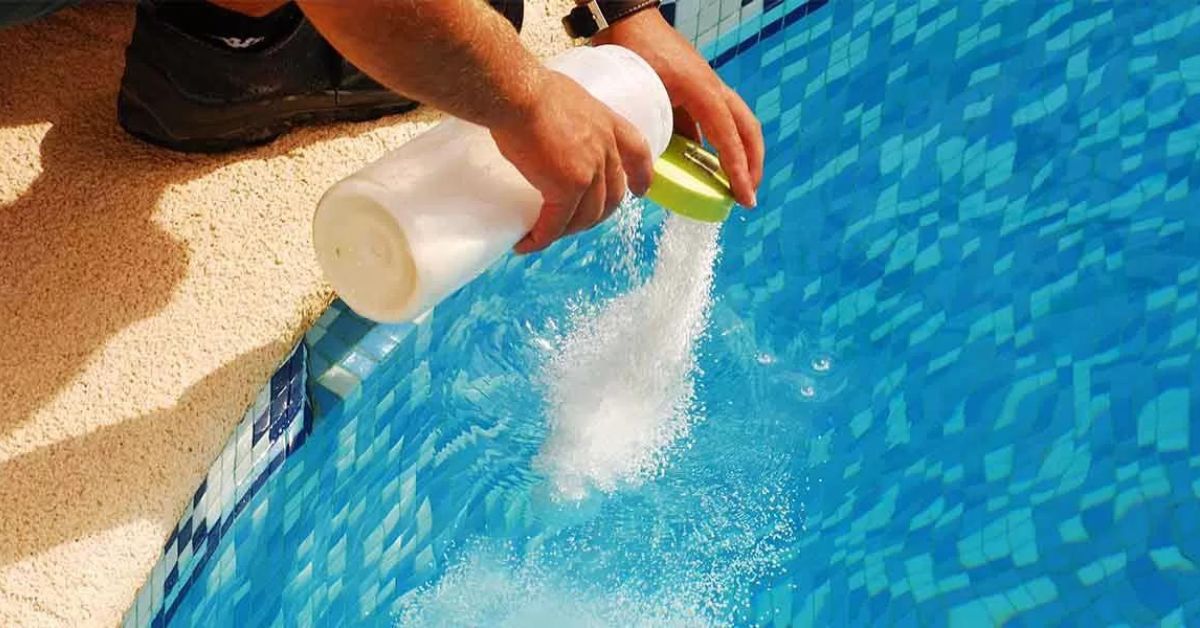None of it is easy, from pool cleaning to how to maintain it. However, it can become easy with proper understanding and knowledge of pool systems. The following content can provide information on pool bottom cleaning, maintaining the pool’s pH, and more.
Saltwater pools provide a fresh and gentle swimming experience but require the right protection to keep them clean and exciting.
Unlike traditional chlorine pools, saltwater swimming pools use a salt chlorinator to supply chlorine, resulting in softer water and fewer chemicals.
However, the right renovation remains crucial to keep the pool in authentic circumstances and ensure a steady and exciting swimming experience. This guide will explore the critical steps of saltwater pool maintenance.
If you have any queries, keep reading; they will all be covered in this blog.
Understanding Saltwater Pool Systems
Before diving into upkeep, it’s critical to recognize how saltwater pool structures work. Instead of adding chlorine at once, saltwater swimming pools use a salt chlorinator, which converts salt into chlorine via electrolysis.
This process occurs within the chlorinator cellular, where energy breaks down the salt molecules, releasing chlorine into the water. As a result, salt stages within the pool stay stable, requiring occasional replenishment.
Understanding the basic concepts of the saltwater pool is not difficult, but the main key is in maintaining saltwater pool. In the following sections, it is described briefly.
Before proceeding, if you are looking for someone to help you with swimming pool renovation in Pennsylvania, contact Sergio’s Pool Renovations.
Essential Key Maintenance Tasks
Many people ask questions like, “How to maintain a saltwater pool?” and to answer such queries, we have collected a few essential keys that will help you in this process.
Monitor Salt Levels
Regularly test the salt ranges for your pool using a salt check package. The best salt awareness for maximum saltwater swimming pool levels among 2,500 to a few,500 elements according to million (ppm).
Adjust the salt level as needed by adding salt directly to the pool water. Be sure to talk with a pool expert or carefully look at the commands for your salt check package, even including salt for your pool.
Check Chlorine Levels
After knowing the salt level and the pool size, salt chlorinators automatically generate chlorine; screening chlorine tiers is vital to ensure proper sanitation. Use a check package to degree chlorine levels regularly and modify the chlorinator output if vital.
To save yourself from those issues, you must frequently test your pool or spa water using a dependable check bundle. This will assist you in determining the chlorine levels and ensure they are within the recommended range.
If chlorine levels are too low, you could need to regulate the chlorinator output or upload chlorine manually.
Balance pH Levels
The saltwater pool maintenance guide focuses only on major areas that help the pool to stay good, like maintaining the correct pH balance is essential for water clarity and swimmer comfort. The ideal pH range for saltwater pools is between 7.2 and 7.6.
Use pH testing kits to monitor levels and add pH increaser or decreaser as needed to achieve balance. Add a pH increaser such as sodium carbonate or baking soda to increase pH.
Use a pH decrease such as muriatic acid or sodium bisulfate to decrease pH. Be sure to follow manufacturer instructions and wear protective gear when handling chemicals.
Clean the Cell
Let’s ask ourselves, “How to take care of a saltwater pool?” well the most common question we don’t know the basic answer is in the cleanliness of the cell. The chlorinator cell can gather scale and particles over time, affecting its performance.
Regularly look into the cellular buildup and clean it with the usage of a mild acid solution or specialized mobile cleanser. Follow producer instructions for secure and effective cleaning.
In addition to cleansing the cellular, make certain to also take a look at the chlorinator’s standard overall performance, consisting of its output and drift price.
Any irregularities must be addressed promptly to ensure the most appropriate features and avoid potential harm to the gadget.
Skim and Vacuum
Remove particles together with leaves, bugs, and dust from the pool’s floor using a skimmer internet. Additionally, vacuum the pool ground and partitions to remove dirt and sediment, keeping the water clean and clear.
Another vital issue of maintaining saltwater pool is not knowing the exact size to smooth or replace the pool filter regularly. The clear-out plays a crucial function in removing impurities from the water, so preserving it in desirable working situations is critical.
The pH, chlorine, and alkalinity degrees must be checked and adjusted often to hold the water secure for swimming.
Brush Walls and Tiles
Brushing the pool partitions and tiles helps save you algae growth and eliminates cussed stains. Use a pool brush to wash surfaces often, paying unique interest to regions at risk of buildup, including corners and crevices.
This can assist save you from the boom of bacteria and harmful organisms. You should look at your pool water frequently and alter chemical tiers as needed.
Backwash the Filter
In the case of a backwash pool, if your saltwater pool uses a sand or diatomaceous earth (DE) filter, carry out ordinary backwashing to remove trapped debris and preserve optimal filtration.
Follow the producer’s recommendations for backwashing frequency and process. This will assist in lengthening its lifespan and ensure that it’s functioning nicely.
If you are aware of any cracks, tears, or other signs of damage to the clear-out, it’s important to replace it without delay to save you any ability protection risks.
Inspect Equipment
Periodically investigate all pool equipment, which includes pumps, filters, and chlorinators, for symptoms of damage or harm. Replace tired components directly to save capability breakdowns and make certain green operations.
Additionally, it’s far essential to preserve the right water chemistry by means of frequently trying out the water and adjusting chemical substances as wanted.
This not only guarantees secure swimming conditions but also helps to prevent equipment damage and prolongs the lifespan of the pool system.
Seasonal Maintenance Tips
After discussing the key aspects of how to clean a saltwater pool, keep a note of aspects to maintain the pool.
Winterize Properly
If you live in weather with freezing temperatures, winterize your saltwater pool to shield it from harm. Lower the water level, drain the device, and upload winterizing chemical substances as encouraged to save you from freezing and corrosion. It’s important to cover your pool to save debris and snow from amassing at the pool cover.
Open Early
Open your pool early during the hotter months technique to allow time for important preservation and modifications. Clean the pool, check out the gadget, and balance water chemistry before the swimming season starts. You may want to keep in mind putting in or updating safety capabilities with pool covers or fencing to ensure secure and fun swimming enjoyment for everyone. And don’t forget to stock up on pool components and add-ons, along with pool chemicals, skimmers, and pool toys, to make the most of your pool this season!
Monitor Algae Growth
Saltwater pool maintenance includes a constant check on algae growth, as it can lead to an increase in warmer weather, mainly if the water chemistry is unbalanced. Look for signs and symptoms of algae, such as greenish water or slimy surfaces, and address them promptly with algaecides and the right sanitation. Regularly cleaning the pool or water function, including brushing the walls and vacuuming the lowest, can also help prevent algae growth.
Checklist to Maintain the Pool
Weekly Pool Maintenance Checklist let’s have a look at the checklist of things to look for when maintaining your pool.
| Task | Frequency |
| Skim surface | Daily |
| Clean skimmer basket | Weekly |
| Vacuum pool | Weekly |
| Brush walls and tiles | Weekly |
| Check pH levels | Weekly |
| Check chlorine levels | Daily |
| Shock pool | Monthly |
| Backwash filter | As needed |
| Inspect equipment | Monthly |
| Check water level | Weekly |
| Test total alkalinity | Monthly |
| Clean pool cover | As needed |
| Inspect pool fence/gate | Monthly |
| Trim vegetation nearby | Monthly |
| Check pool lights | Monthly |
| Winterize (if applicable) | Seasonally |
Recap
This saltwater pool maintenance guide taught you many things about pools, especially saltwater pools. Caring for a saltwater pool requires diligence and daily renovation.
However, the rewards of crystal-clear water and a calming swimming experience are well worth the effort. Following these vital preservation tips and staying proactive in your pool care habits, you can revel in your saltwater oasis for future years.
Remember to check water chemistry frequently, clean the device, and promptly address any issues to hold your pool pristine. With the right care, your saltwater pool may be a source of joy and rest for you and your own family.






